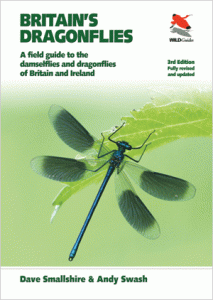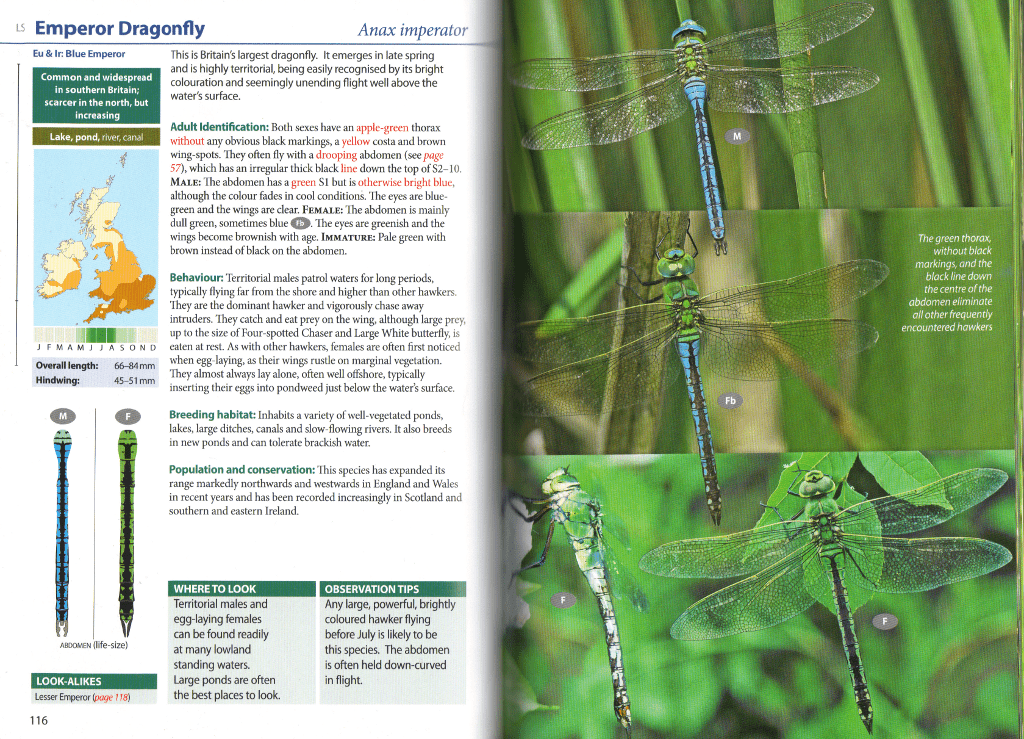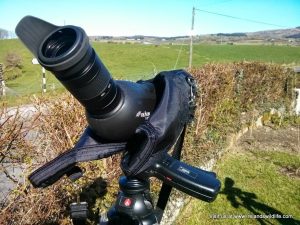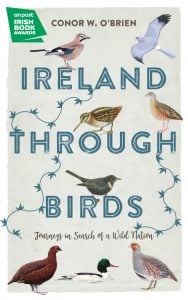 Dragonflies and damselflies are the all-stars of the insect world. Large, mobile, active predators — with the possible exception of cephalopods (octopuses, cuttlefish and squid) the odonata (dragonflies and damselflies) are about as exciting as invertebrates get.
Dragonflies and damselflies are the all-stars of the insect world. Large, mobile, active predators — with the possible exception of cephalopods (octopuses, cuttlefish and squid) the odonata (dragonflies and damselflies) are about as exciting as invertebrates get.
In Ireland we have 11 species of damselfly and 22 species of dragonfly, and while identifying some of them is relatively straightforward if you get a reasonable views, others can be challenging. That’s where a good field guide comes into its own.
Britain’s Dragonflies: A field guide to the damselflies and dragonflies of Britain and Ireland by Dave Smallshire and Andy Awash is the only comprehensive photographic field guide of its kind. Published as part of the “Wild Guides” series by Princeton University Press, this fully revised and updated 3rd edition is crammed full of superb photographs and detailed information designed to do one thing: help you identify the dragonflies and damselflies you see out in the field.
It covers all 56 resident, migrant and former breeding species recorded in Britain and Ireland along with seven potential vagrant species to look out for. More than 450 full colour photographs and 550 illustrations show adult males, females and immature individuals for each species, including any colour variations you’re likely to encounter.
At the start of the book there’s a sizeable section covering dragonfly biology, life cycle, preferred habitats and tips on how to watch and photograph dragonflies effectively in the field. That’s followed by a very useful summary on how to go about identifying dragonflies, including key features to note, with clearly labelled photographs detailing the pertinent bits of dragonfly anatomy and explaining the terminology you need to know. There are also some very handy ID charts showing key identification features of different dragonfly groups side-by-side for quick comparison, and then the book gets to the individual species accounts.
Like any good field guide these focus on leading you to an accurate identification. Each species is given a double-page spread, with stunning colour photographs on the right, and detailed information including a distribution map, flight times, illustrations of key ID features, descriptive ID text and notes on behaviour, breeding habitat and population and conservation information for the species. The book is well laid out, and presents information in a very user-friendly way — making it easy to look up species either in the field or from photographs when you get home.
The combination of ID charts and the detail offered in the individual species accounts work really well together, and make identifying the species you see quite straightforward, given good views. Perhaps just as important — particularly for the dragonfly novice or improver — is the advice on the key ID features to focus on for the different dragonfly groups. For the inexperienced it’s all too easy to overlook a feature in the field, only to find out later it’s the only diagnostic characteristic to secure an unequivocal identification. By following the advice in the guide you learn what to look out for when, improving your dragonfly identification skills.
Once you’ve mastered the adults, there’s a “bonus section” at the back of the book all about identifying dragonfly and damselfly larvae and exuviae… but that’s a whole new adventure that I’ve yet to embark on.
All in all this is an excellent book, and has certainly helped me get better at identifying the dragonflies and damselflies I’ve encountered in Ireland so far this summer. If you’re interested in improving your own dragonfly ID skills, and want to learn more about this fascinating group of insects, I’d certainly recommend adding this title to your wildlife bookshelf.
You can buy Britain’s Dragonflies from NHBS ((left) Amazon.co.uk (middle) or Amazon.com (right) by clicking on one of the affiliate links below:










